The outdoor exposure is spread on an area of 1,5 hectares and during a single day in the botanic garden you can travel almost all around the world. Just like with the greenhouse exposition, the whole outdoor area is geographically divided into specific individual regions and biomes of the Earth.
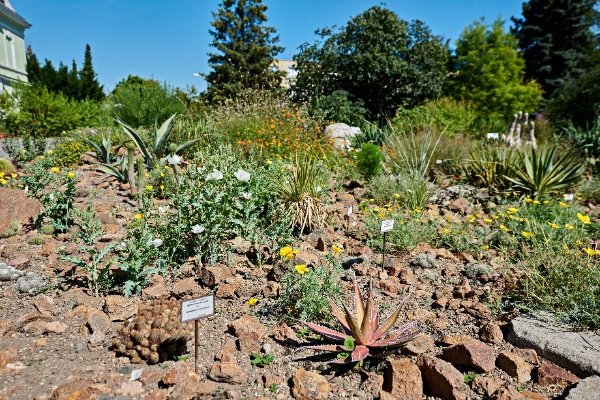
Mexico is the most biologically diverse country of the world. Mexican vegetation consists of dry shrubbery and forests with high populations of cacti (Cactaceae) in the dry and warm areas. The agave genus (Agave) has its development centre here and in the vegetation there are plants from the (Asteraceae) family abundantly scattered – tagetes (Tagetes) and other known genera (sunflower – Helianthus, dahlia – Dahlia, cosmos – Cosmos, zinnia – Zinnia). Also the sage genus (Salvia) has rich representation. In the outdoor exposure you can admire frost-resistant yucca (Yucca) which bloom at the beginning of summer as well as the prickly pear (Opuntia phaecantha). Red peppers, corn and tomatoes which are quite common in our daily cuisine also come from Mexico.
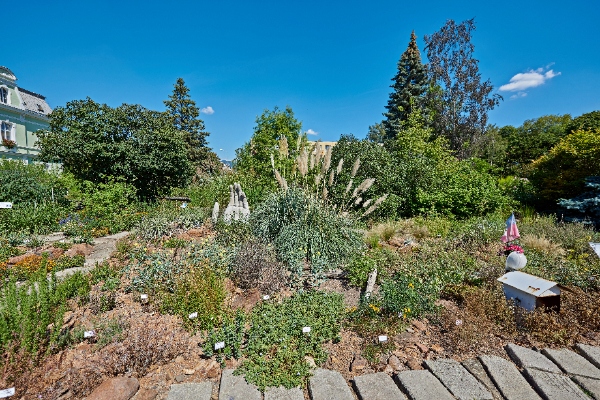
The South American state of Chile is stretching across 4 500 km of the Pacific Ocean coast. From the northern borders with Peru and Bolivia to Tierra del Fuego (which Chile shares with Argentina) in the south, the vegetation here is extremely variegated. In the north-western part of Chile we can find the driest place in the world – the Atacama Desert. In several places there is only 2 mm precipitation a year, in some other parts of Aracama there is even less. Heavy rains come about once in twelve years. When it comes to flora itself, bromeliads (Bromeliaceae) are typical on the whole continent of South America. Among others, Puya berteroniana, which grows here, reaches three meters of height in blossom and among thirty Chilean bromeliads, this one belongs to the largest ones. In some rare humid places, the high grasses (Cortaderia) dominate the landscape. Shrubby Senna, succulent Cistanthe, cacti, sorrels and Nolana are an abudnant genera in Chile.
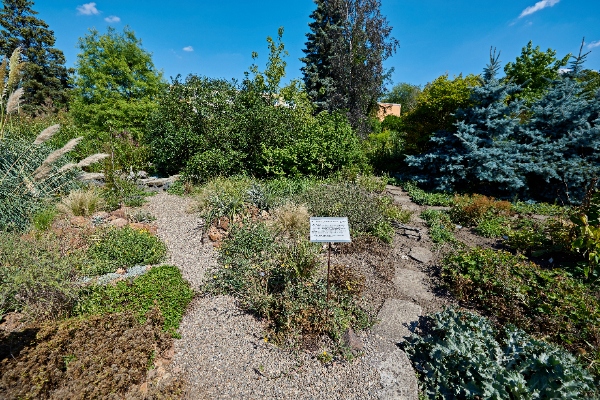
Foothills of the Andes in Peru and Argentina are characterized by a more humid climate which suits another composition of plants than you find in the exposure of Atacama Desert. Several smaller species of plants are annual but most are perennial. Lady´s purse (Calceolaria) grows in wet crevices, decorating the exposure with its typical blossoms according to which the genus got its Czech name (Pantoflíček = slippers, a kind of house/home shoes). Among other plants, there is pale yellow-eyed grass (Sisyrinchium) which is genetically related to the well-known irises or loasa (Loasa) with its stinging hair on its stem and leaves.
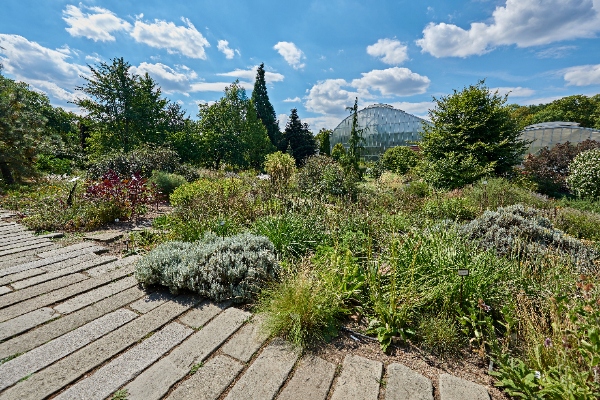
Capensis or Cape Floristic Kingdom is located in the southernmost end of South African Republic. The flora here is very rich and about 9 000 species of plants (with 69% endemism) occur in a small area (divided by the surrounding mountains from the rest of the inland). The whole region is characterised by Mediterranean type of climate with wet and mild winters and dry warm summers. Fynbos created by evergreen scrub is a typical vegetation cover. Renosterveld is another vegetation type where composite plants (Asteraceae) dominate and succulents from Aizoaceae family are also represented more often. Aloe is symptomatic for dry regions, the so called Karoo, which have their centre of diversity in South Africa. Mountain steppe areas of Dragon Mountains in the South African Republic and Lesotho follow up on the Cape Floristic kingdom.
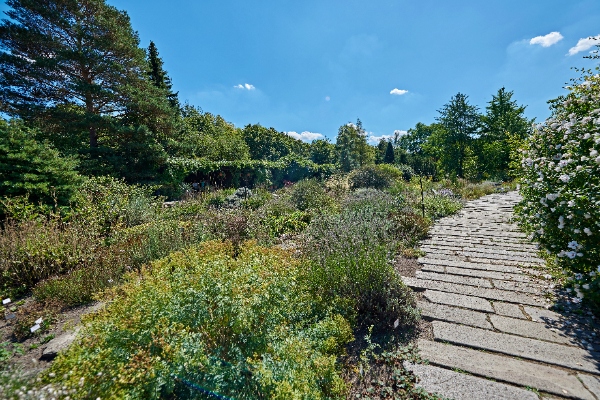
Mediterranean defines the area around the Mediterranean Sea. Mild winters and hot dry summers are specific for this biome. Hardwood trees (mainly bushes, so called macchie) create the basis of the Mediterranean vegetation. Lamiaceae is a typical, well-known family – who wouldn't be familiar with lavender (Lavandula), sage (Salvia), thyme (Thymus) and other plants containing essential oils. Bulbs are another typical representative of local flora's ability to survive hot Mediterranean summers by remaining drawn underground, while they blossom colder in spring and autumn.
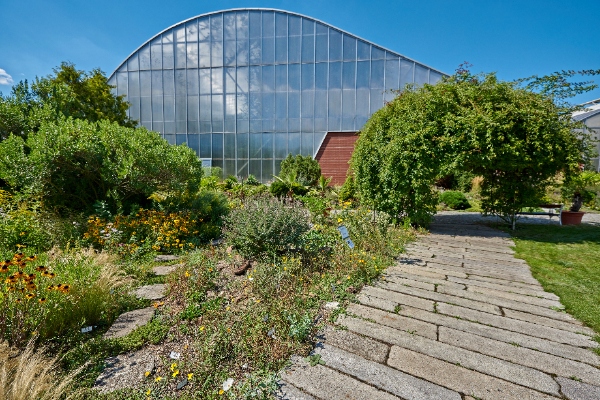
Drier areas of North America like for example the area in and around California are represented in our garden by a flowerbed surrounding the central lawn. Various grasses (Poaceae) are one of the dominants (such grasses create the notorious North American prairies) and the other dominant being Aseraceae, which are popularly grown and cultivated as perennials – rudbeckia, echinacea, zinnia or coreopsis.
Acid-loving and predominantly moisture-loving flora of North America is represented by the peat bog and heath section. Carnivorous sarracenia (Sarracenia) grow in a small peat bog, they catch insects as their prey in ingenious traps in order to improve their chances of survival in an otherwise nutrient-poor territory. The whole biotope is supplemented with Ericaceae plants (Ericaceae) like for example a cranberry (Vaccinium macrocarpon).
Shadow-loving North American plants creating undergrowth of deciduous forests may be found in the section of forest plants.
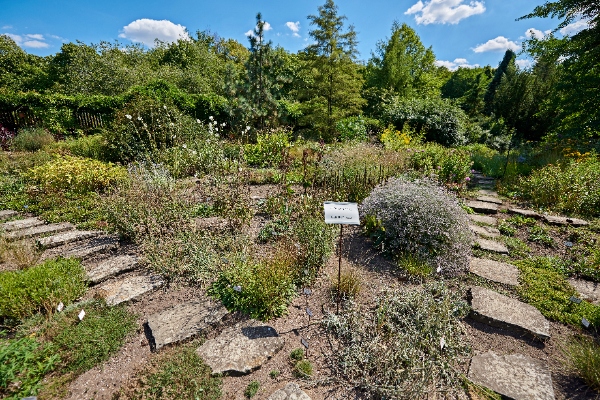
Various parts of the outdoor exposure are devoted to Asian flora. Arid and thermophilic plants are grown in the section of south-western Asia. The plants with oceanic tendency grow closer to water where Hemerocallis blossom in June. A separate section of the garden close to arboretum is devoted also to Hemerocallis. Forest plants have been planted under the already grown up trees that line the whole garden area. Oriental papaver and silene blossom during summer and the summer garden is also decorated with round garlic inflorescence (Allium). Moisture-loving representatives may be found on the common Eurasian peat bog.
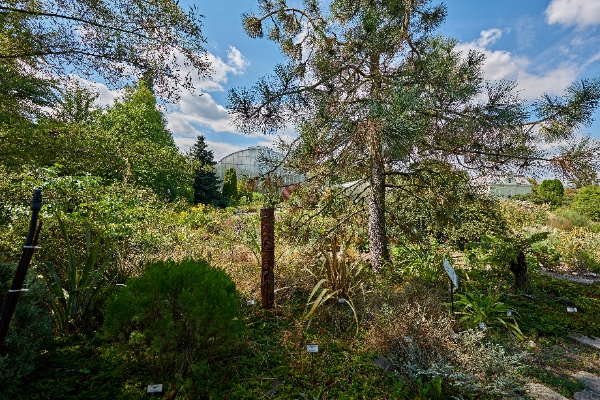
The most distant continent from us is often related to subtropical and tropical plants which can hardly be grown in greenhouse conditions. Some areas to the south (for example Tasmania or New Zealand) host unique flora which can be grown in our outdoor exposure under certain conditions. Tasmania's Dicksonia Antartica is the toughest tree fern in our summer. Acaena, the Rosaceae genus with thorny fruit, came here all the way from Chile.
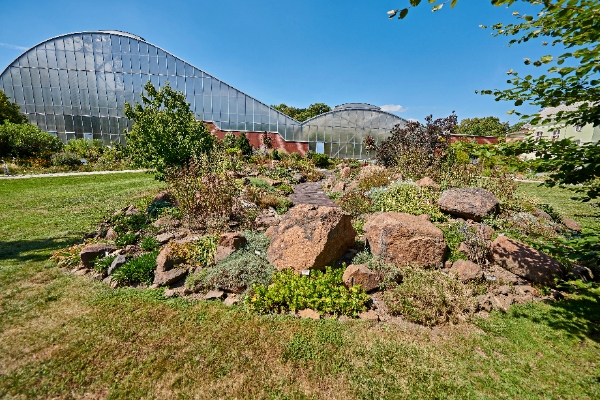
Of course we couldn't forget our European and especially Central European flora in the exposures represented by forest and moisture-loving plants, which can be found on peat bogs. During early spring when the trees aren't yet leafy, bulbous and tuberous species blossom and express an important aspect of spring. In a smaller exposure called “Czech garden” there thrive mainly shadow-loving plants like Dianthus carthusianorum or Lychnis viscaria.
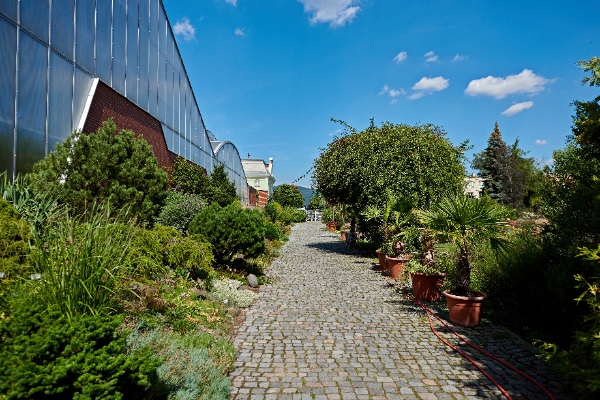
Rock garden or “Alpinum” is trying to imitate real mountain biotopes in the wild by planting plants that are sometimes able to settle in such inhospitable environment. The plants have to cope with short growing seasons, excessive sun exposure and the shortage of moisture. The plants are planted on the rock lining the greenhouse (these are mainly the rock plants from Europe, Central Asia and North America) and the central lawn (which mainly come from South Europe, Asia, China and North America). Also present are endemic plants of a certain area ("endemic" meaning that they normally don't grow anywhere else other than at one specific location - be it a continent, a mountain range (in this case Caucasus) or an island (Crete). The most delicate rock plants are found in the newly built cool rock garden greenhouse.

Two exposures are specially related to each other, since their goal is not to represent a certain biotope but rather they are devoted to plants with certain (for example herbal) use. Near the Australian and New Zealander flora we will find a small corner with dangerous, poisonous plans as digitalis, Atropa bella donna or Ricinus communis. Behind the administrative building and confectionery there is a so called herb garden representing the well-known and less known kinds of medicinal and useful plants.

The parking space is dominated by a back outdoor exposure with the plantings of various leafy and conifer bushes, hydrangeas and rhododendrons. The rose called ‘Gruß an Teplitz’, bred in the year 1897 by an Austro-Hungarian grower Rudolf Geschwind the name of which could be translated as „Hello Teplice“ is of interest. It is the only outdoor plant which has the spa town Teplice in its name.
Some genera include countless number of species and forms. We can view the collection of Hemerocallis, Helianthemum, Heuchera and geranium in our garden.
Regarding grown up trees the visitors may be taken by the most voluminous tree of the world – Sequiadendron giganteum which has very shallow bark protecting it against fires. Two examples of Gymnocladus dioica are almost 90 years old and are probably the oldest plants in the outdoor exposure. Gingko biloba is an ancient plant relative to conifers usable in medicinal products or cuisine or Liriodendron tulipifera the huge blossoms of which remind the blossoms of lily.

